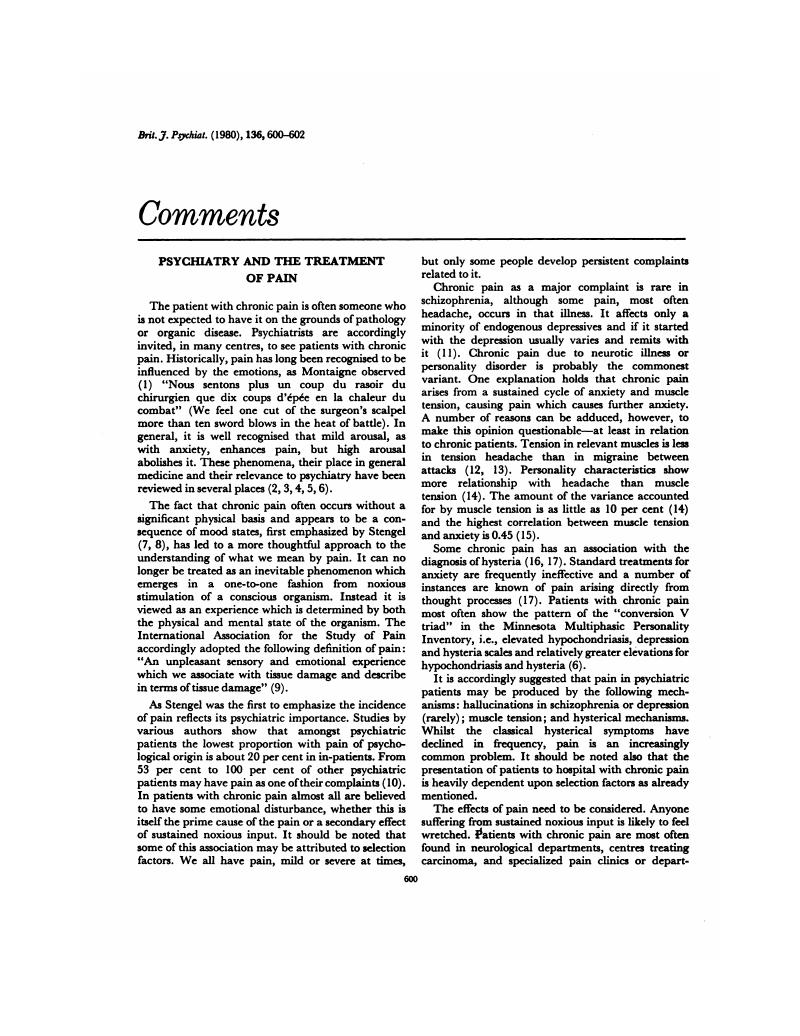Crossref Citations
This article has been cited by the following publications. This list is generated based on data provided by Crossref.
Waring, E.M.
1982.
Marriage and Non-Psychotic Emotional Illness.
International Journal of Social Psychiatry,
Vol. 28,
Issue. 2,
p.
111.
Hall, Wayne
1982.
Psychological Approaches to the Evaluation of Chronic Pain Patients.
Australian & New Zealand Journal of Psychiatry,
Vol. 16,
Issue. 2,
p.
3.
Bass, Christopher
Wade, Clyde
Gardner, W.N.
Cawley, Robert
Ryan, K.C.
Hutchison, D.C.S.
and
Jackson, Graham
1983.
UNEXPLAINED BREATHLESSNESS AND PSYCHIATRIC MORBIDITY IN PATIENTS WITH NORMAL AND ABNORMAL CORONARY ARTERIES.
The Lancet,
Vol. 321,
Issue. 8325,
p.
605.
Kincey, John
and
Benjamin, Sidney
1984.
Desynchrony following the treatment of pain behaviour.
Behaviour Research and Therapy,
Vol. 22,
Issue. 1,
p.
85.
Roy, Ranjan
1985.
Migraine and Muscle-Contraction Headache: Psychiatric and Personality Issues—A Review.
The International Journal of Psychiatry in Medicine,
Vol. 14,
Issue. 2,
p.
157.
Moulin, Jean-François
and
Boureau, François
2004.
Douleur chronique et psychiatrie.
EMC - Psychiatrie,
Vol. 1,
Issue. 1,
p.
1.




eLetters
No eLetters have been published for this article.